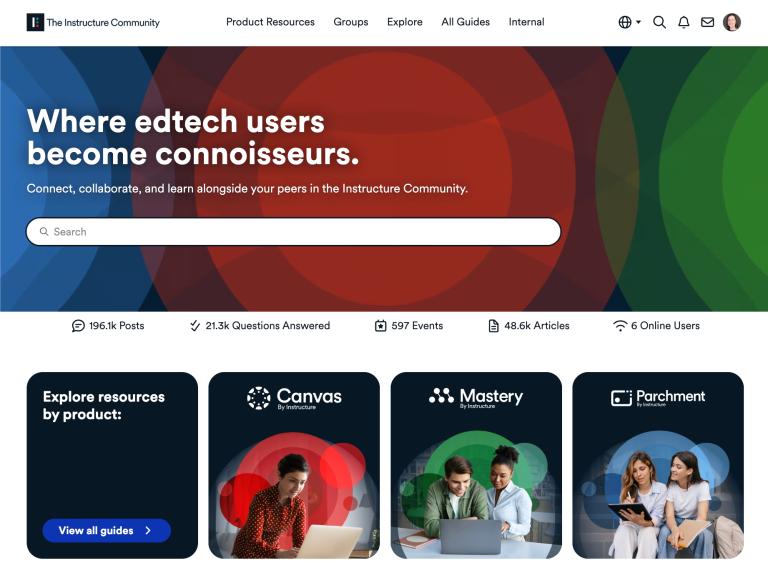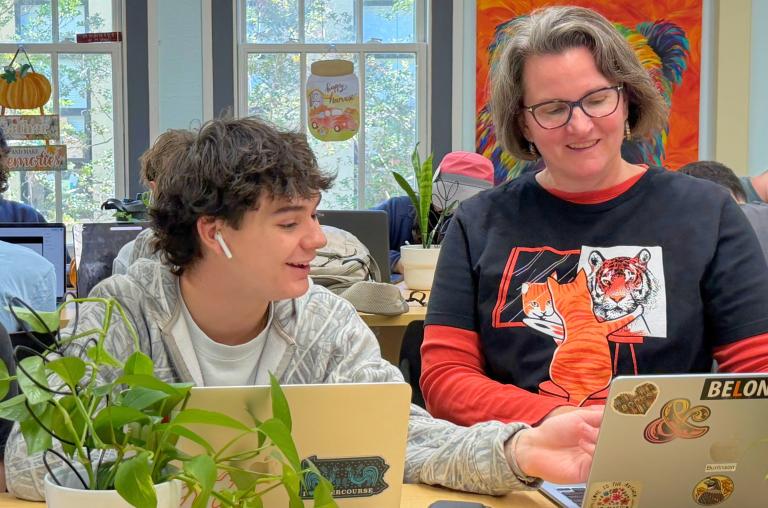In our latest Leadership and Learning live stream, Trenton Goble, VP of K12, sat down with three K12 leaders from across the country to discuss how they are promoting consistency across learning channels during this unprecedented time. In an effort to ensure equity and access in all learning communities—both virtual and remote—we are sharing four key ways to create consistency for students and parents.
#1 Curate Learning Resources In One Centralized Location
Let’s face it, the more time students and parents spend looking for assignments and resources, the less likely it is that learning will occur. As a school and district leader, it is paramount to encourage your teachers to curate the content they already have in a way that is easy for parents and students to reference before adopting new processes.
“We need to have the same place for students to start every single time. There are plenty of ways to accomplish this, but I believe that a Canvas home page is a great springboard for learning.”
-Shara Johnson
Educator tip: Create a Canvas home page that serves as a one-stop-shop for preferred methods of communication, an outline of upcoming assignments, and a central place for linking resources so students and parents can easily identify what is next on the learning agenda.
#2 Provide Teachers With a Template For Cohesive Instruction
We know that one size does not fit all when it comes to instruction, but when you provide teachers with a template or course blueprint, you are putting guardrails in place to ensure consistency in instruction. Teachers should still have the flexibility to make in-the-moment decisions to personalize learning, but in times like these it’s more important to be consistent than it is to be creative.
“In our high schools, we created a template for all of our courses. These are all exactly the same. The template looks identical—from grade level to grade level, course to course. Now parents and students will have the same expectations no matter what.”
-Rich Wilson
Educator tip: Determine which standards are most critical in bridging the acheivement gap and encourage your teachers to build common assessments and coursework to include them. This is becoming more and more important as schools remain closed and educators prepare for next year.
#3 Establish Daily Parameters for Learning
Both students and parents are still adapting to working and learning from home. To aid in that transition, educators can set daily schedules and clear learning objectives for students to easily identify what they should be focusing on each day. We know that not everyday looks the same, though. Especially for students at the primary grade levels who may not be using digital resources on a daily basis.
Nancy Brightwell, Executive Director of a Turnaround Initiative and the Central 1 Learning Community in Charlotte, NC, also believes in implementing a one-stop-shop model for students and parents so that even when instruction does change, the learning format and daily schedule does not.
“Our district has established guidelines for daily instructional time for all students as well as a consistent instructional method by grade level—two hours per day for Pre-K - 3rd graders who are using learning packets, and three hours per day for 4th - 12th graders who are using Canvas—as well as consistent “office hours” for teachers to check in with students and parents.”
-Nancy Brightwell
Educator tip: Commit to one method for delivering instruction so students and parents can approach each day with a plan.
We know this process will vary greatly due to the unique needs of each district, school, and grade level, but regardless of the method, simplifying the instructional cycle will ease stress for everyone involved.
#4 Meet With Teachers and Leaders Regularly to Remain United
As teachers navigate these changes in instructional practices, it is more important than ever for leaders to be on the same page. If leaders don’t have a clear vision for instruction, teachers will be left to their own devices, which could cause students and parents to keep track of multiple platforms for daily learning. We know each community faces different challenges, making it difficult to remain consistent across the board. Especially as leaders strive to ensure equity and access for all students—regardless of grade level or socioeconomic status.
Rich Wilson, Director of Curriculum and Assessment for Olathe Public Schools, shared that in his district, consistency must be achieved on a case by case basis to ensure each student has the opportunity to learn.
“Up to 30% of the families in our district do not have internet access, so we are creating packet learning for every grade level to even the playing field. We have done our best to ensure we address as many needs as possible, and consistency has been our saving grace. We have asked all teachers to stay with us as a district to support all kids and all families.”
-Rich Wilson
Educator tip: As every school and district strives to ensure the continuance of learning, it’s important to remember that not all learning experiences will be equal throughout this time, but they can be equitable with consistency.
For more insights on driving a successful remote learning culture, read our latest post about improving communication processes.
The Fundamental Five: A Framework for Improving Communication Processes
Related Content
 inst-3step.jpg
inst-3step.jpgBlogs
 community-homepage.jpg
community-homepage.jpgBlogs
 kim-classroom.jpg
kim-classroom.jpgBlogs

